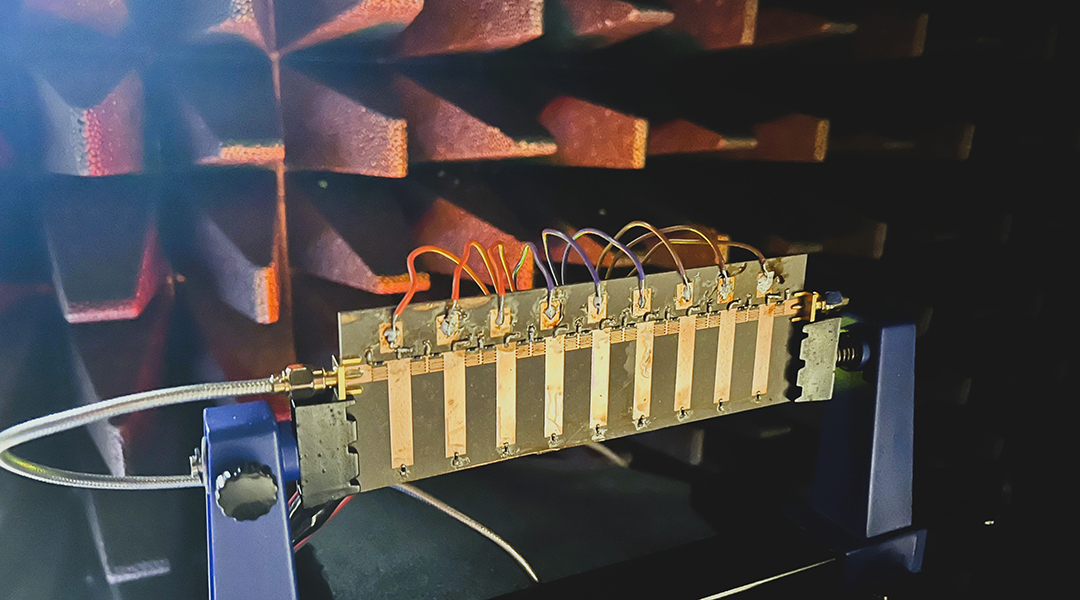As the Internet of Things (IoT) grows into a vast network of connected devices, it’s becoming simultaneously more essential and more prone to misuse. The IoT is enormous; by 2030, some estimates predict there will be tens of billions of connected devices exchanging massive quantities of data.
As these devices are often connected to the IoT on standardized, insecure wireless networks, security is a growing concern. Imagine hackers accessing your home security camera’s video or audio feed or stealing your banking information via your coffee pot.
Physical layer security
Researchers at Rutgers University believe they may be able to protect your connected devices — and your private information — with physical layer security, which relies on some concepts that may seem a little old-school, like unique radio signals and electromagnetic waves.
“This strategy banks on the unique attributes of the communication channel, such as signal propagation and the physical essence of the transmission medium,” said Chung-Tse Michael Wu, associate professor at Rutgers University and co-author of the research published in Advanced Intelligent Systems.
“Instead of relying on cryptographic codes, [physical layer] security harnesses these inherent channel properties to create a distinct security layer, making data interception considerably challenging.”
Wu said traditional methods of security are easier for hackers to overcome because they rely on mathematical algorithms that are complex but not impossible to defeat, especially for hackers with advanced capabilities. Many IoT devices also have basic software and limited batteries, so it’s harder for them to mount a successful defense against a cyberattack.
Physical layer security relies on surprisingly simple strategies such as directional modulation, which scrambles data in all but one specific direction. This means a hacker would have to be perfectly positioned to intercept data from a device protected with physical layer security. This method of security also uses “time modulation,” which is when the signal’s properties are altered over time.
A “space time” digital coder
The Rutgers team used these principles to create their “space-time-modulated digitally coded metamaterial leaky wave antenna”. Metamaterials are synthetic electromagnetic structures that Wu said have “extraordinary properties generally not found in natural materials”.
These structures can manipulate electromagnetic waves in various ways, which allows them to form signal beams that can be reshaped and redirected.
“Digitally coded” means the signals are changed or modified using a specific code or pattern, while the “leaky wave” part of the device’s name refers to its ability to send radio waves in multiple directions without the need to physically change locations.
“Imagine watering your garden with a hose that has tiny holes along its length,” Wu said. “Water leaks out of these holes along the way. In antennas, a ‘leaky wave’ antenna intentionally allows some of the signal (electromagnetic waves) to ‘leak’ out at various points along its length. This can be used to create a scanning beam of radio waves.”
A working prototype
Together, these features give the researchers’ antenna the ability to modulate “in both space and time domains,” Wu said, which could make IoT-connected devices much more secure.
Directional modulation requires advanced software, which needs to be frequently updated to keep pace with rapidly evolving wireless channels. The researchers said that the antenna system uses AI to ensure that the software will evolve as needed and continue to provide security as the wireless landscape changes.
“Our claims are not just theoretical,” said Wu. When the researchers tested their prototype antenna, they found that receivers aligned in the correct direction could decode the transmitted data, while receivers that were not aligned correctly struggled. Wu said these tests help confirm the technology’s promise as a better way to secure devices on the IoT.
Reference: Alireza Nooraiepour, Chung-Tse Michael Wu, et al., Programming Wireless Security Through Learning-Aided Spatiotemporal Digital Coding Metamaterial Antenna, Advanced Intelligent Systems (2023). DOI: 10.1002/aisy.202300341

















